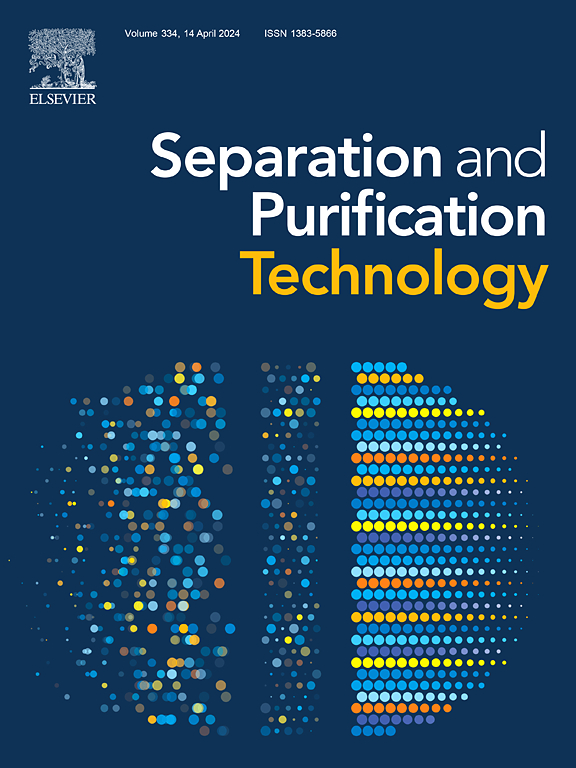Revealing the functional relationship between manganese dissolution potentials and lithium concentrations with diffusion coefficient for lithium intercalation in λ-MnO2 electrode
IF 8.1
1区 工程技术
Q1 ENGINEERING, CHEMICAL
引用次数: 0
Abstract
Electrochemical redox lithium extraction (ELE) with LiMn2O4/λ-MnO2 redox couple, stands out as the most prospective technology for efficient and selective lithium extraction from the salt lake brines owing to the high lithium intercalation capacity, selectivity, and recovery rate. However, the decreasing Li+ concentration induced electrode polarization, especially, at low concentrations, and inappropriately applied potentials can significantly accelerate manganese dissolution (MD). While no correlational research has established the relationship between the manganese dissolution potential (EMD) and Li+ concentration gradient. Herein, the inversely proportional relationship between EMD and the lithium concentration is first revealed through steady-state diffusion coefficients. This research sheds light on the MD mechanism at different lithium concentration gradients and lays the foundation for the industrial application of electrochemical lithium extraction with LiMn2O4/λ-MnO2 redox couple from salt lake brines.揭示λ-MnO2 电极中锂插层的锰溶解电位和锂浓度与扩散系数之间的函数关系
使用 LiMn2O4/λ-MnO2 氧化还原偶的电化学氧化还原锂萃取(ELE)具有高锂插层能力、高选择性和高回收率,是从盐湖卤水中高效、高选择性萃取锂的最有前景的技术。然而,锂+浓度的降低会导致电极极化,尤其是在低浓度时,不适当的电位会显著加速锰的溶解(MD)。目前还没有相关研究确定锰溶解电位(EMD)与 Li+ 浓度梯度之间的关系。在此,通过稳态扩散系数首次揭示了 EMD 与锂浓度之间的反比关系。该研究揭示了不同锂浓度梯度下的 MD 机理,为利用 LiMn2O4/λ-MnO2 氧化还原耦合物从盐湖卤水中电化学提锂的工业应用奠定了基础。
本文章由计算机程序翻译,如有差异,请以英文原文为准。
求助全文
约1分钟内获得全文
求助全文
来源期刊

Separation and Purification Technology
工程技术-工程:化工
CiteScore
14.00
自引率
12.80%
发文量
2347
审稿时长
43 days
期刊介绍:
Separation and Purification Technology is a premier journal committed to sharing innovative methods for separation and purification in chemical and environmental engineering, encompassing both homogeneous solutions and heterogeneous mixtures. Our scope includes the separation and/or purification of liquids, vapors, and gases, as well as carbon capture and separation techniques. However, it's important to note that methods solely intended for analytical purposes are not within the scope of the journal. Additionally, disciplines such as soil science, polymer science, and metallurgy fall outside the purview of Separation and Purification Technology. Join us in advancing the field of separation and purification methods for sustainable solutions in chemical and environmental engineering.
 求助内容:
求助内容: 应助结果提醒方式:
应助结果提醒方式:


